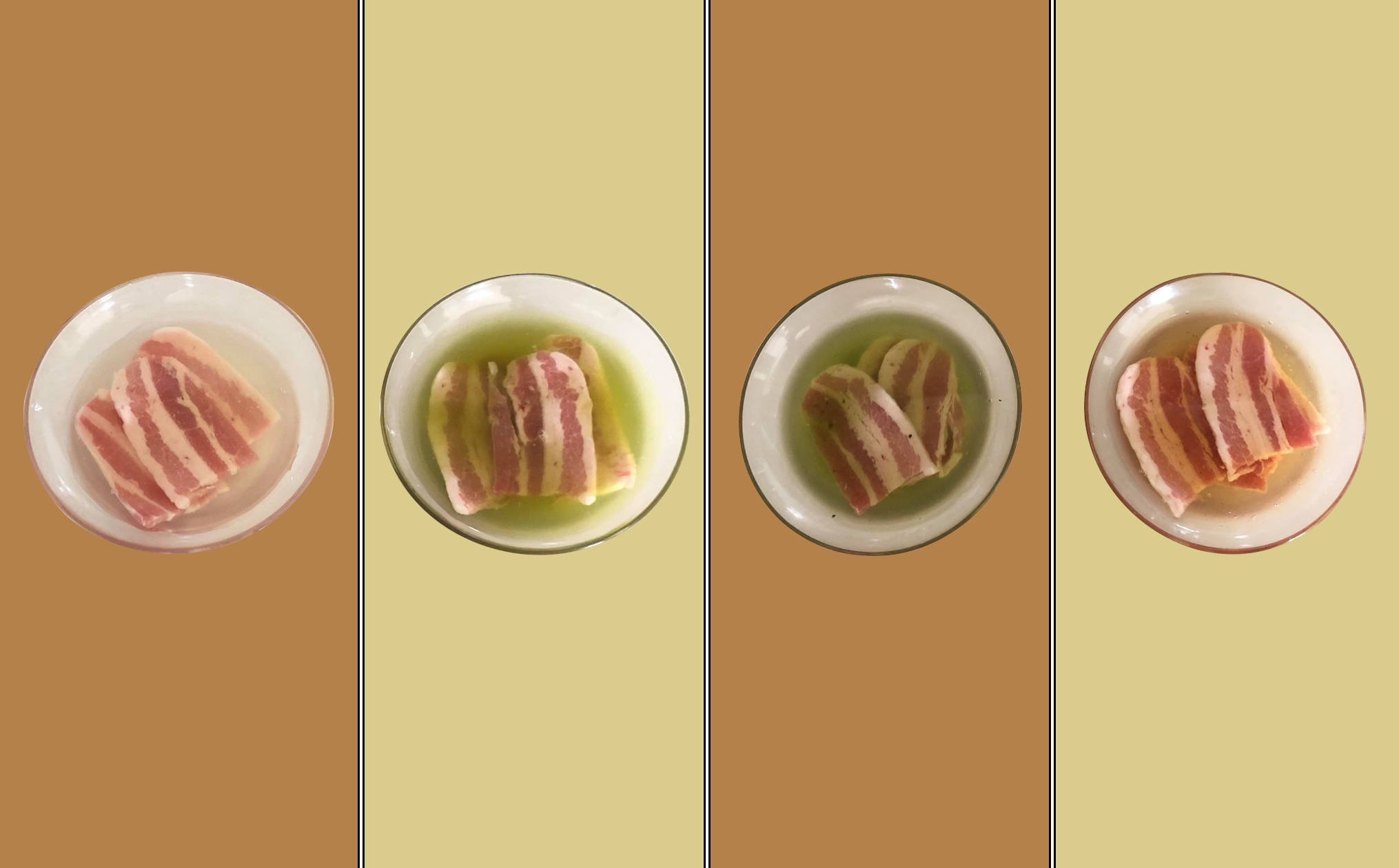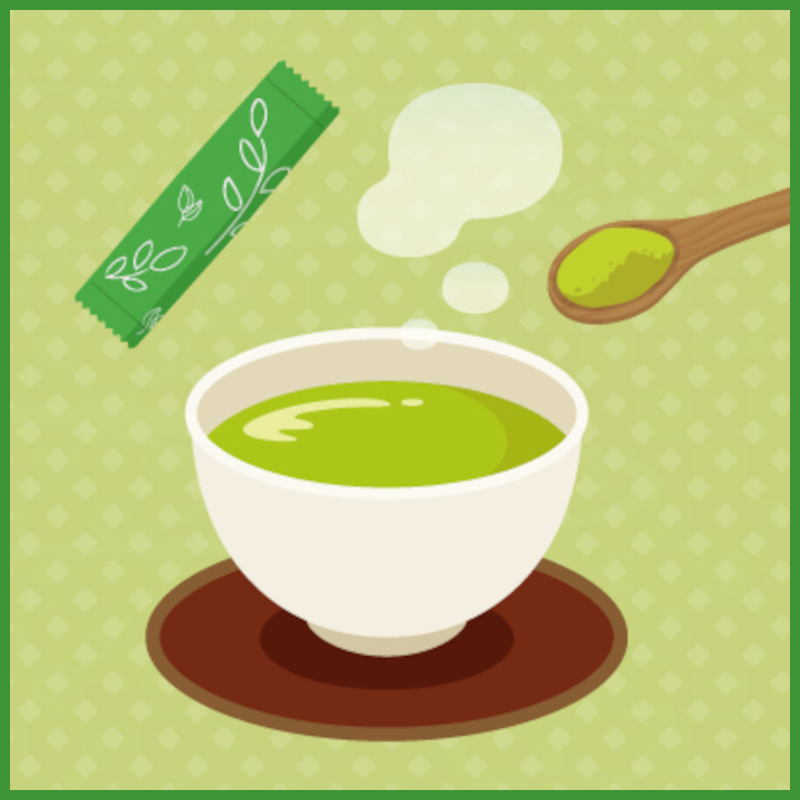
Verification #2: What makes the meat softer and tastier?
Does marinating meat in Japanese tea make it tastier?
Marinating meat in Japanese tea may reduce the fat content in meat, improve the tenderness, juiciness and flavor of cooked meat.
In Japan, green tea is also used in a variation of shabu-shabu hotpot called cha-shabu, where sliced pork is boiled quickly in Japanese green tea.
Following Verification #1: What makes the meat softer and tastier?, we conducted an experiment with Japanese tea.
Preparation
There are different types of Japanese tea, so we selected four typical Japanese teas to see how they influence the taste and texture of meat.
①Sencha②Fukamushicha
③Gyokuro
④Hojicha

Following the brewing instructions for each type of tea, we placed a cup of 100ml of each tea in the fridge to chill.
| Type of tea | Sencha | Fukamushicha |
| Amount of tea leaves | 6 g | 6 g |
| Amount of water | 180 ml | 180 ml |
| Tea brewing temperature | 80°C | 80°C |
| Steeping time | 1 min | 1 min |
| Type of tea | Gyokuro | Hojicha |
| Amount of tea leaves | 15 g | 3 g |
| Amount of water | 200 ml | 130 ml |
| Tea brewing temperature | Cold | Boiling |
| Steeping time | 1 hour | 30 seconds |

About constituents in tea leaves
- Catechin is a polyphenol which triggers bitterness and astringency. The concentration of catechins in the leaf increases with sunlight exposure. Sencha usually contains the highest level of catechins.
- Caffeine and amino acid are found in young tea leaves. Plant growth results in decreased levels of caffeine and amino acid. Still, covered cultivation which is a cultivation method in which tea trees with growing fresh buds are covered stands to slow down the process. The very well-known premium tea, Gyokuro and Matcha, have more caffeine and amino acids than other green teas.
- Fiber is mainly found in hardened tea leaves considered of a lower quality.
- Teas grown covered, such as Gyokuro and Matcha, produce a low amount of vitamin C. On the contrary, teas grown unshaded, such as sencha, contain high levels of vitamin C.
What effect does temperature have on the dissolution rate of tea constituents?
Catechin (which triggers bitterness and astringency) and caffeine (that causes bitterness) easily dissolve in hot water. So, bitterness and astringency in tea can be prevented with precise temperature setting and temperature control. Brewing at a higher temperature will produce a sharper flavor and higher aroma, while brewing at a lower temperature will produce a softer and more intense umami taste.
We recommend adjusting the way you steep your tea depending on your mood to enjoy flavor differences within the same tea.
Method
From the above, we have predicted that sencha would have a refreshing taste, fukamushicha would taste astringent because of its fine-cut leaves that easily absorb water, gyokuro would have an intense umami flavor and hojicha would have a fragrant and refreshing aroma.
The meat was added to the bowls and marinated for one hour.
①Sencha
②Fukamushicha
③Gyokuro
④Hojicha

The meat was then pan-fried and seasoned with salt and pepper.
Results
The meat was softer, moister and tastier than usual.Personal impressions

①The meat was bland compared with others.
②The tea added more depth to the flavor.
③A different umami taste ticked our palate compared with fukamushicha and it had a gentle taste. The greenish color that came from the natural color of the leaves faded away quickly.
④The flavor released when we sank our teeth into the meat was good. It was both aromatic and delightfully refreshing.
To be honest, it is hard to say which one was better. They all taste different and have their own merits. If we had to choose a favorite one, we would choose number four ④ as first choice. But number two ② was also very tasty...




Leave a comment
This site is protected by hCaptcha and the hCaptcha Privacy Policy and Terms of Service apply.